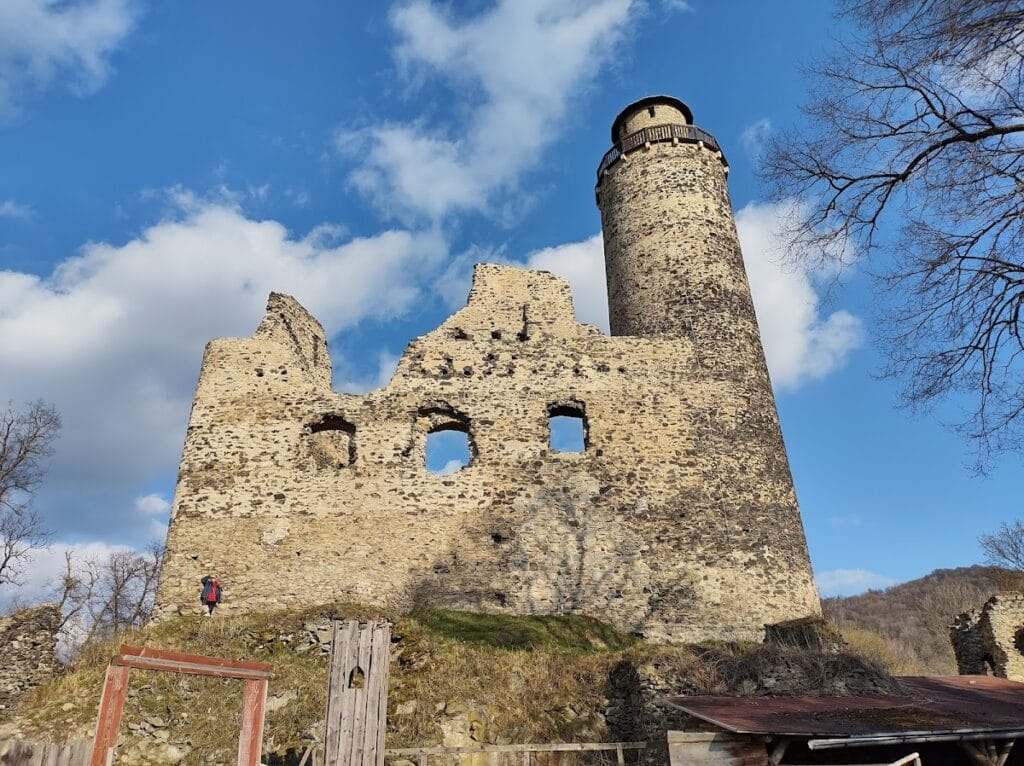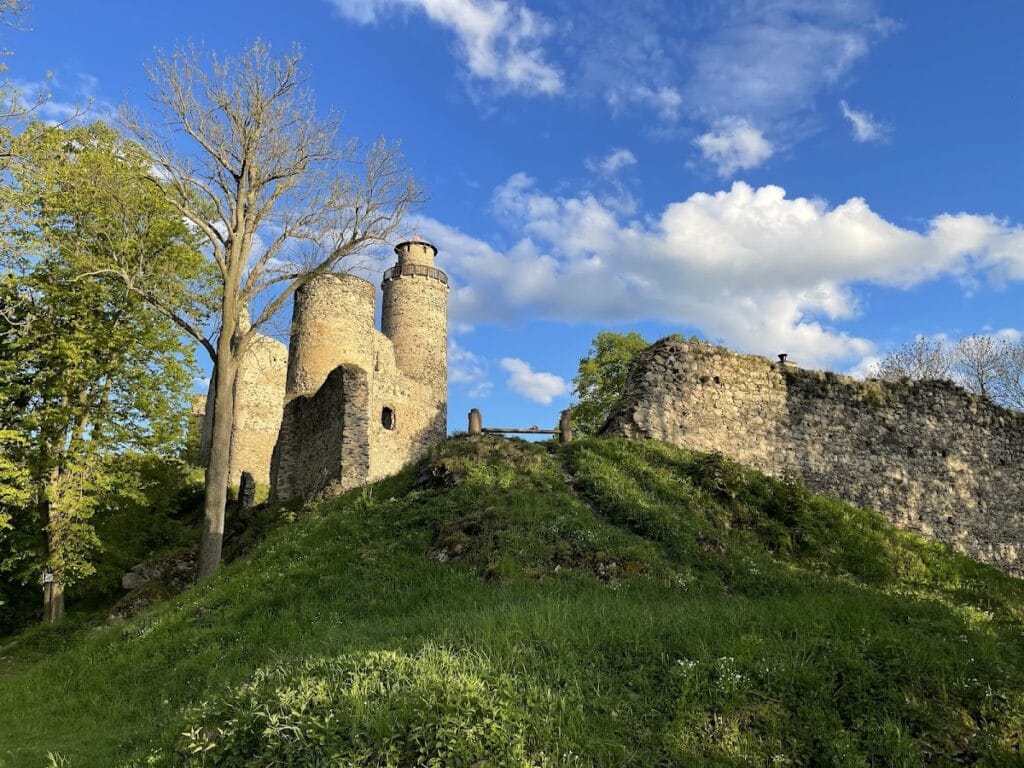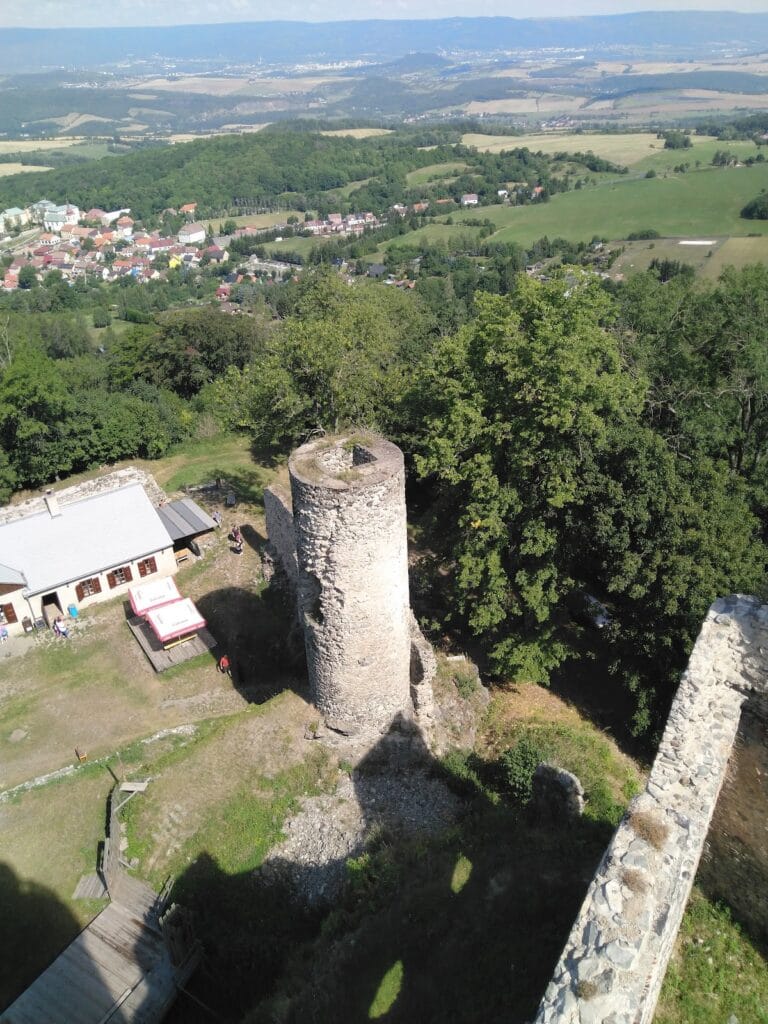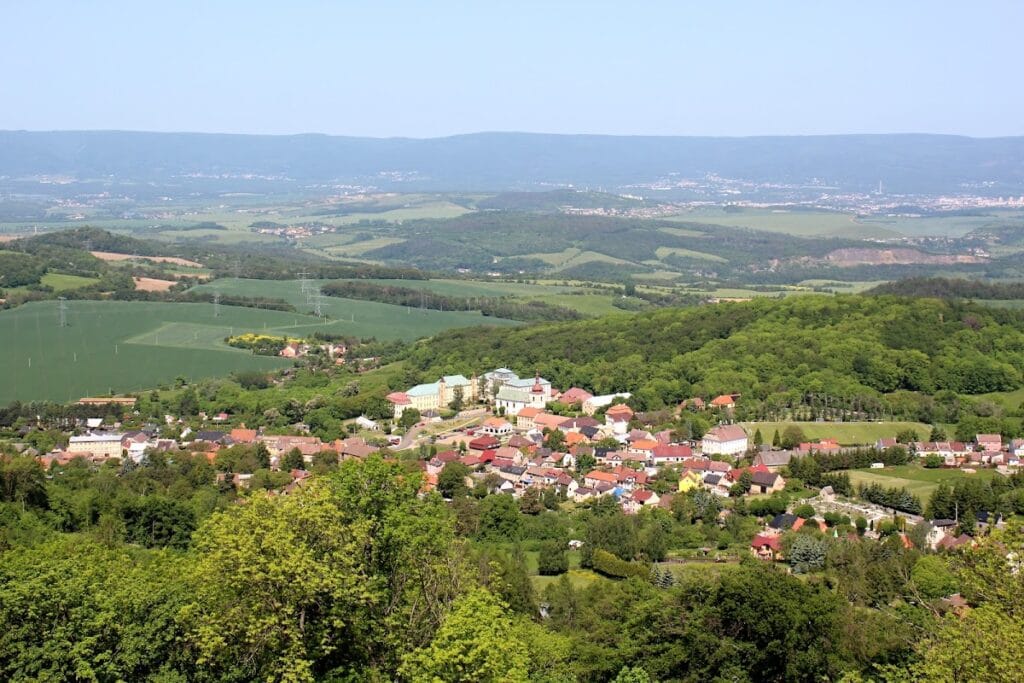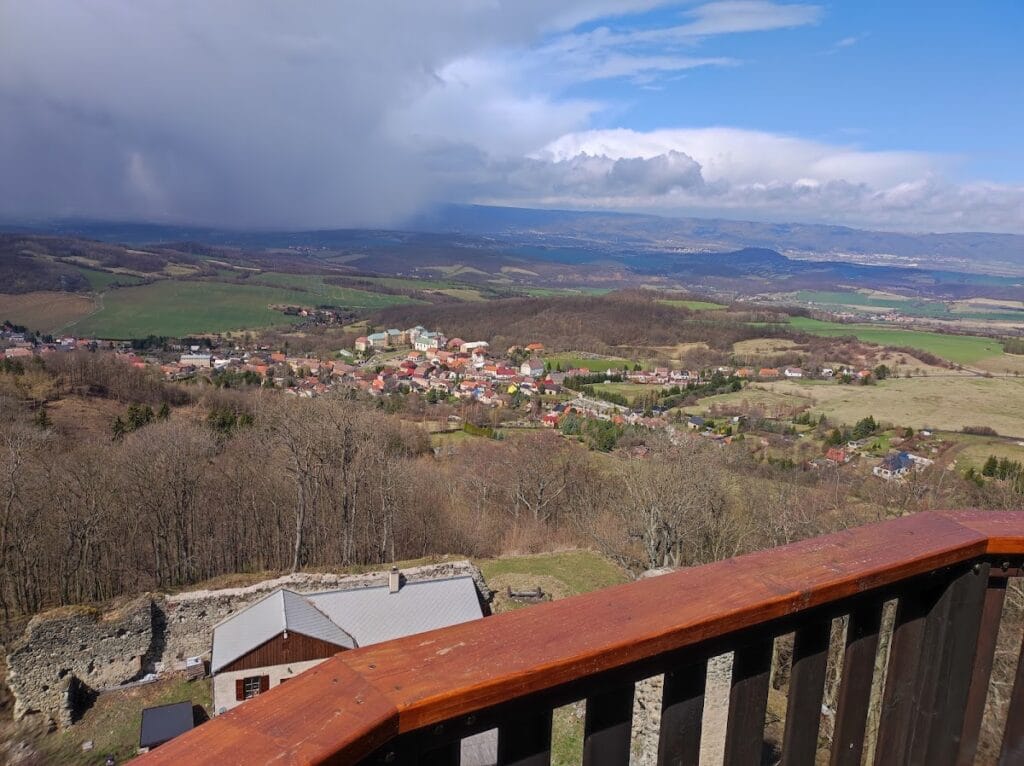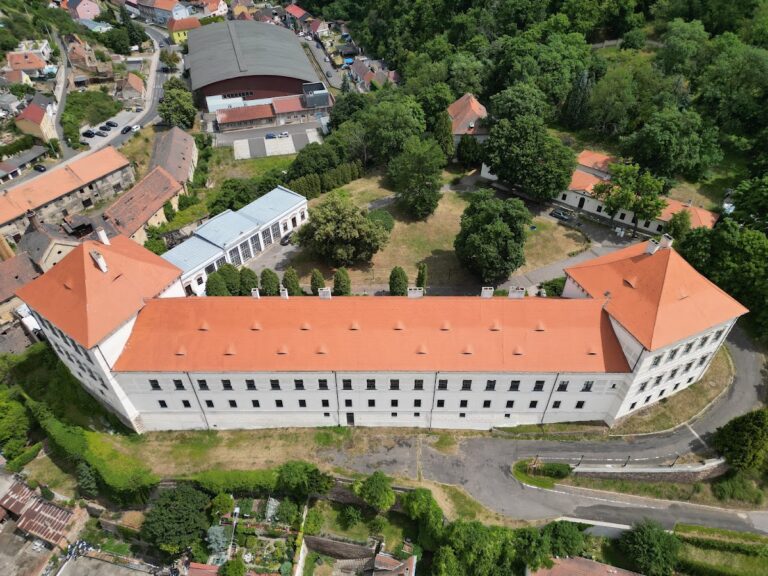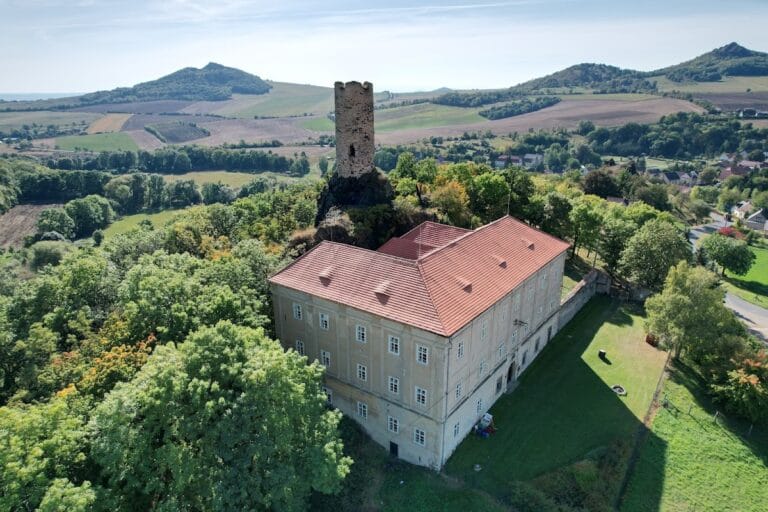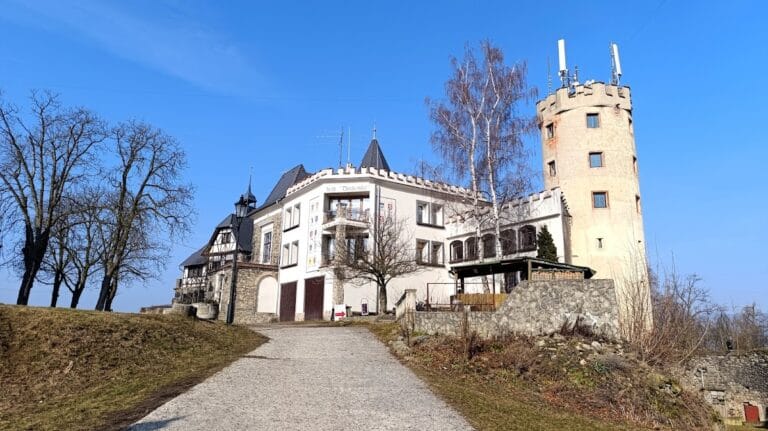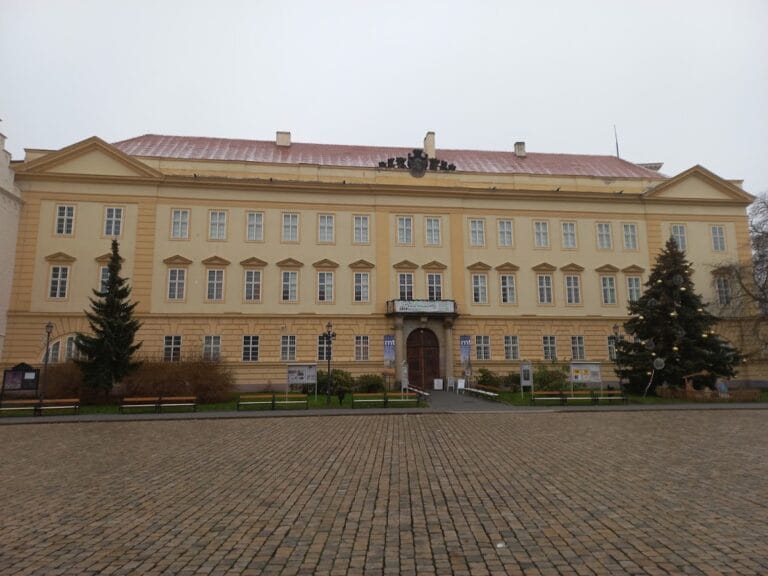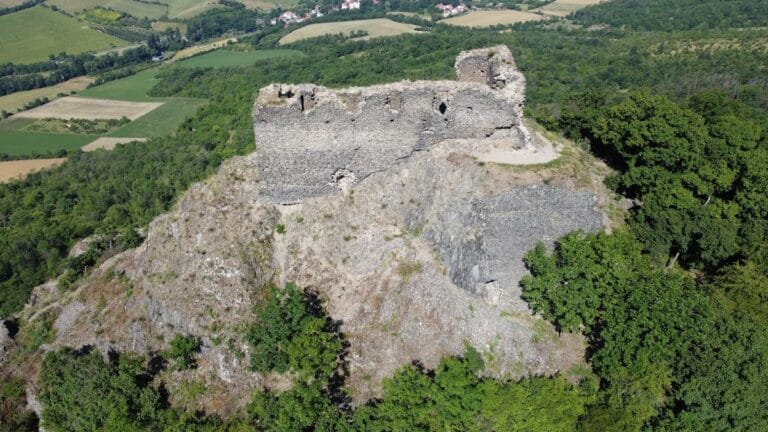Kostomlaty Castle: A Medieval Fortress in the Czech Republic
Visitor Information
Google Rating: 4.7
Popularity: Low
Official Website: turistickamapa.cz
Country: Czechia
Civilization: Medieval European
Site type: Military
Remains: Castle
History
Kostomlaty Castle is located in the municipality of Kostomlaty pod Milešovkou in the Czech Republic. It was established by the nobility during the early 14th century, attributed to the lords of Rýzmburk, also known as the lords of Osek, who descended from the Hrabišici family.
The earliest recorded mention of the castle dates to 1333 when Boreš of Osek sold the fortress to Chotěbor of Herštejn. Shortly after, in 1335, the castle came under the possession of Charles IV, then Moravian margrave who later became King of Bohemia and Holy Roman Emperor. Kostomlaty became part of the royal estates and was subsequently held as a fief. Documentation from 1370 points to the involvement of the Žerotín family, as indicated by records of a priest’s installation on the property, marking the castle’s role in local ecclesiastical matters.
Throughout the late 14th and early 15th centuries, ownership shifted repeatedly. In 1388, Jindřich Škopek of Dubá acquired the property. The castle’s strategic position drew it into the turbulent events of the Hussite Wars. Albrecht Škopek, a successor, mounted a determined defense against repeated attacks. However, in 1434, the Hussite leader Jakoubek of Vřesovice captured Kostomlaty, becoming its owner the following year. The Vřesovice variant of the Kostomlaty family maintained control of the castle until the early 1600s.
By the beginning of the 17th century, Kostomlaty Castle was no longer used as a residence, deemed outdated by new standards. Noble families relocated to more modern homes in the surrounding village. By 1606, the castle was abandoned and started to fall into ruin. After the outbreak of the Thirty Years’ War in 1618, the estate was confiscated and passed to the Černín family, who held it for centuries to follow.
In the 19th century, specifically 1841, Josef Fenzel constructed a recreational inn within the lower courtyard of the castle. He also displayed various archaeological discoveries on the site. Unfortunately, this development disturbed the potential for thorough excavation of the ruins. The inn and a lookout tower associated with it were destroyed during the 1950s.
A renewed interest in preserving the castle emerged toward the end of the 20th century. Since 1998, a civic organization has undertaken conservation efforts aimed at stabilizing remaining structures. These initiatives culminated in the restoration and reopening of the main tower as a lookout point by 2014. Additionally, Kostomlaty Castle provided a filming location in 2007 for a movie inspired by the fairy tales of Jan Drda, linking the site to Czech cultural traditions.
Remains
Kostomlaty Castle is characterized by a typical bergfried-style design, common in medieval central European fortifications. Its layout consists of two primary parts: the upper castle and the lower castle. The upper section contains the central defensive tower, or bergfried, flanked by two palaces arranged around an irregular trapezoidal courtyard. Below lies the lower castle, a spacious outer bailey that housed various economic buildings supporting the castle’s operations.
Access to the lower castle was through a rectangular gatehouse, which stood under the protection of a distinctive round tower. This tower is notable for its square-shaped interior space and a machicolation—a defensive structure with openings in the floor used for dropping objects or shooting at attackers—supported by sturdy stone corbels. Elements of the original approach road survive, as does a section of a barbican gate, an additional fortification built in front of the main gate to strengthen defense.
Separating the upper and lower sections was a transverse moat accompanied by a curtain wall, a defensive barrier forming the castle’s perimeter. Facing the bergfried was a third gate, providing controlled access to the inner parts. In the mid-15th century, the western palace was heightened by an additional storey, recognizable today by three large windows, and a door connecting from this upper floor directly to the bergfried’s entrance. The bergfried itself is topped by a slender upper structure encircled by a gallery, a form likened to a “máselnice,” or butter churn—a local term describing its shape. A wooden spiral staircase was later added inside the tower during the 19th century.
The castle’s defenses included two main rings of curtain walls. The outer wall, known as the parkán wall, enclosed the broader castle area, while an inner curtain wall formed a second line of defense. Mid-15th-century fortifications enhanced these walls with two square bastions facing inward on the southern parkán wall, and the addition of a two-room building adjoining the eastern section of the parkán.
Around the main castle, archaeologists have identified two fortified enclosures related to siege activities. The larger of these lies roughly 370 meters southwest and is roughly oval-shaped, measuring about 210 by 70 meters. It is surrounded by a substantial earthen rampart reaching up to five meters in height and fourteen meters in thickness. On its southern boundary, this enclosure is further protected by a double ditch system. The smaller enclosure, located approximately 175 meters west of the castle, has an unclear function but is also part of the larger defensive complex.
Among finds recovered from these siege areas is a collection of metal objects, including arrowheads, axes, nails, chain links, padlocks, horseshoes, knives, crossbow bolts, and early gunpowder weapon projectiles. These artifacts, although limited in quantity, provide evidence of the military encounters that took place here.
At present, mainly ruins survive, including fragments of the bergfried tower, the two palaces, curtain walls, and various gate structures. The lower castle area still bears the partial remains of the 19th-century inn built by Josef Fenzel, including some standing walls and a cellar. The castle is situated at an elevation of 566 meters above sea level, offering extensive views of nearby mountain ranges and settlements. Local tradition also speaks of a spring near the castle with reputed healing qualities, adding a layer of folklore to the site’s history.
